Behind the scenes of Chatsworth House at Christmas
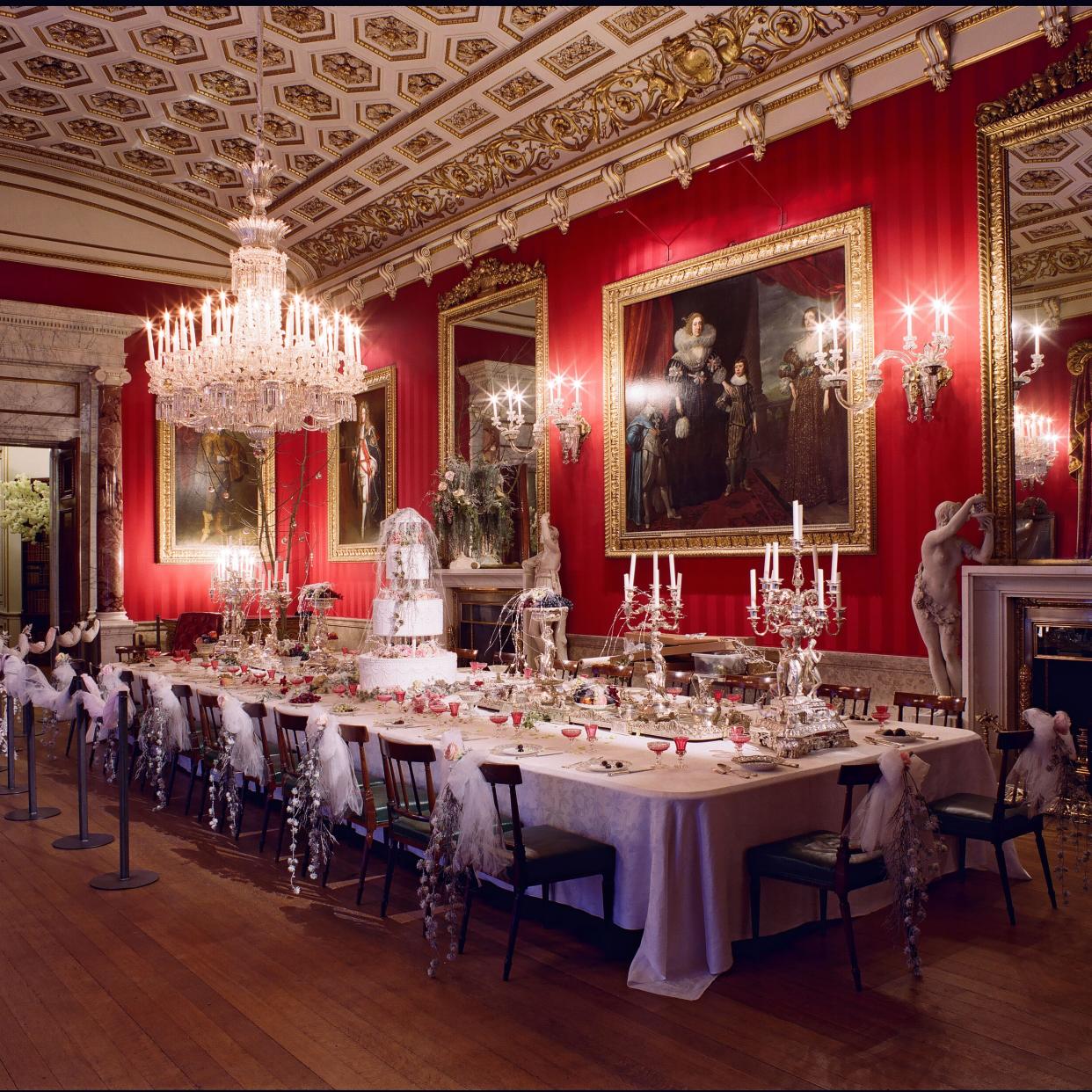
Every year from early November to early January, Chatsworth, the beautiful Derbyshire home of the Dukes of Devonshire, attracts 200,000 visitors to its Christmas market, to the nativity plays held in a barn with real lambs and donkeys, and to the farm shops. And each year it also holds a theatrical event, something between a museum exhibition and a pantomime.
This year’s show, Oh Dickens!, is based on the novels of Charles Dickens: William Cavendish, the 6th Duke of Devonshire (aka the ‘Bachelor Duke’), was a friend of Dickens, and the author stayed at Chatsworth in 1851 – his signature with a squiggly flourish is in the visitors’ book.
It was Debo Mitford, the late Dowager Duchess of Devonshire, who first had the idea of opening Chatsworth at Christmas to raise local spirits and bring some income to the district when it was ravaged by foot-and-mouth disease in 2001.
She did no more than open the house, put party hats on the statues and decorate the pictures with tinsel, but the crowds came. From that beginning, the Chatsworth Christmas has snowballed, as it were.
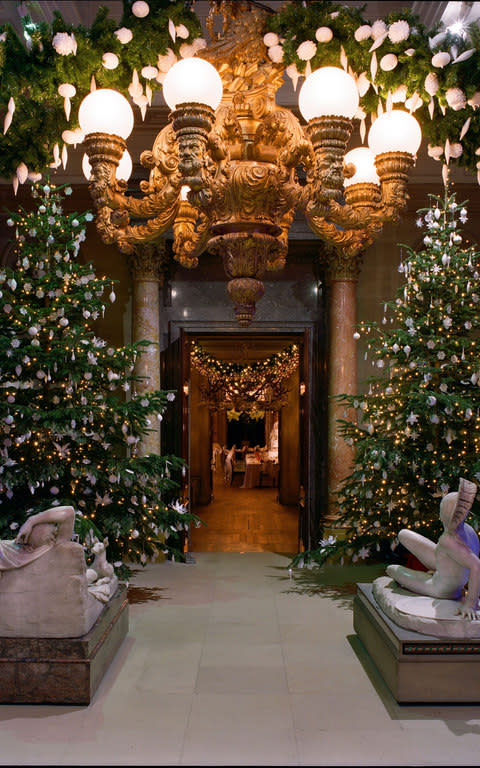
"This is now our busiest time of the year," says the current and 12th Duke, known universally as Stoker. Everyone on the estate, from the Duke and Duchess to the most junior gardeners, is involved. As you walk into the hall, there is the smell of wood smoke from the open fire, and the sound of carols.
Pillars are festooned with decorations made, this year, from the pages of books: there is also a spectacular arch and a sculpture, the Book Man. His face and body are composed of old books carved, pleated and folded by collections technician Luke Stones, who is more used to cleaning silver than creating artworks.
"I’ve never done anything like this in my life," he says. You hear that over and over again, because every single part of the Chatsworth Christmas has been made in-house.
In the sumptuous crimson-and-gold dining room, Miss Havisham’s wedding feast from Great Expectations features a giant, three-tier cake, made of plywood by the carpentry workshop and iced with Polyfilla by Amy Secker, a tailor in the textiles department, who had never even iced an ordinary cake before.

"Everything starts with the books," says Susie Stokoe, Chatsworth head of textiles, who has designed the show. Every year, she and head housekeeper Janet Bitton run their ideas past the Duchess, who says, "They are both so creative – we are lucky."
Every public room and corridor has been designed to represent a Dickens novel. Fagin’s den from Oliver Twist has taken over the Great Chamber, with its painted ceiling by Antonio Verrio. Against a projection of a Victorian London roofscape, an actor encourages nine-year-old Fearne Buckley from Sheffield to pick a silk handkerchief from his pocket that he turns into a cane, then a coin, which disappears when he puts it into her hand.
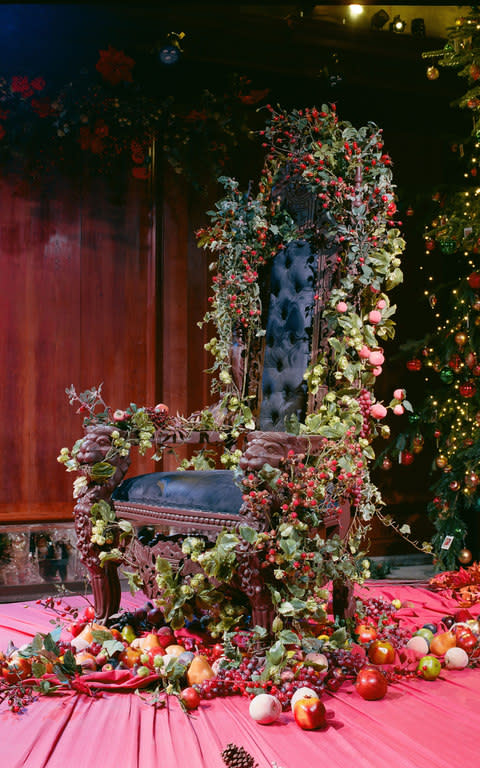
The friendly Fagin, and an almost comical Scrooge sitting in the tall four-poster of one bedroom as he is confronted by Marley’s (friendly) ghost, which is projected on to the ceiling, are both helping to make this a Dickens Christmas that is not going to give nightmares to any small visitor.
"I’m going to be taking my grandchildren [aged between four and 20] to see Oh Dickens!," says the Duchess. "They are all coming to stay for Christmas." At the beginning of the 19th century, Christmas was celebrated more in the country than in towns, partly because factory workers had so little leisure time – for many, December 25 was not a holiday – but by the end of the century it was the main festival of the year.
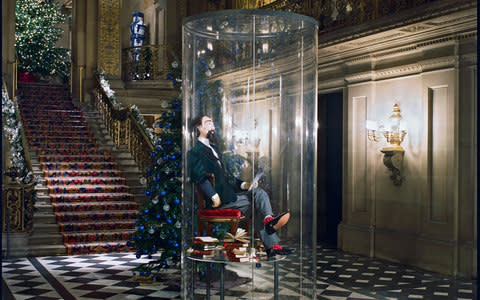
In The Pickwick Papers, first published in 1836, the festive scene Dickens sets is almost pagan, with its feasting, drinking adults ("a huge fire of blazing logs and a mighty bowl of wassail").
A Christmas Carol, published in 1843, a year after a shocking government report on child labour, showed for the first time in literature a very different Christmas – that of a poor urban family with little to eat, until the reformed miser, Scrooge, is shown the error of his ways and buys them a massive turkey.
A turkey so large, Dickens biographer Claire Tomalin points out, that it could not possibly be cooked in time to be eaten on Christmas Day. In 1848, The Illustrated London News published a drawing of the Royal family celebrating indoors around a decorated Christmas tree, a tradition from Prince Albert’s childhood in Germany. Soon every home in Britain had a tree surrounded by toys for children, what Dickens in his story A Christmas Tree (1850) called ‘that pretty German toy’.
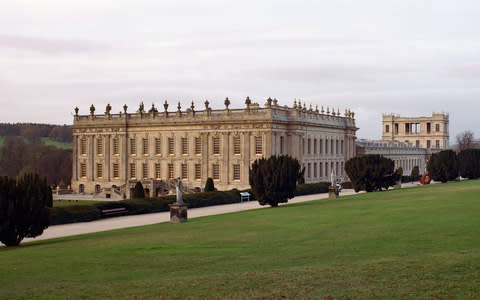
Christmas had changed from groups of adults drinking to the child-centred event that is closer to our own celebrations today. There are decorated trees everywhere in Chatsworth, including lofty 25-footers in the Painted Hall, hung with pale baubles against a background of blackbird song to evoke the early dawns during the six frenzied weeks in which Dickens wrote A Christmas Carol.
One of the joys of the Chatsworth Christmas is that all the ingenious inventions by the staff are displayed among collections of the most beautiful objects and paintings. There is a stylised white Christmas tree of wooden loops and flourishes in the Chapel Corridor, a light space hung with white stars and tumbling tricolour rosettes to recall the Paris of A Tale of Two Cities.

Georgiana, the beautiful, wilful and sometimes scandalous wife of the 5th Duke, and a friend of Queen Marie Antoinette of France (miniatures of them both are on display), left her daughter, and the daughter of the banker Thomas Coutts, in Paris when the Revolution broke out in 1789.
Coutts wrote a furious letter, outraged at her behaviour, and her letter replying to him, on display here, shows a somewhat startling lack of family feeling: "You cannot conceive how your letter grieved me – I certainly have a sincere regard for the D of D – but in no instance would he direct my conduct."
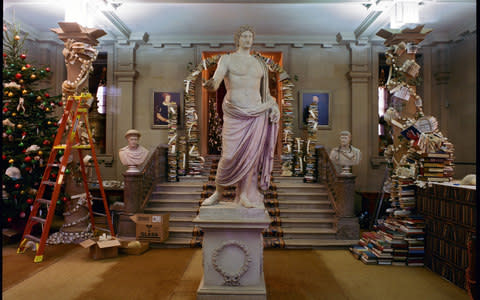
The dark panelling of the Oak Room, with its carved heads of bishops, originally in a German monastery, is the setting for the oddest collection – the theme here is The Old Curiosity Shop. Among the room’s features are smaller Christmas trees created by different departments of the Chatsworth staff.
"The electricians are really showing off this year," says the Duke. Their tree is a transparent pyramid crammed with light bulbs that change colour every few seconds, while the plumbers’ tree nearby consists of shower hoses, with taps for baubles, and plugs and chains in place of tinsel swags. The guides are dressed in the Dickensian style, some grand in silk, velvet and lace; some as market girls in woollen skirts and aprons.

There are urchins and Pearly Kings, Bill Sikes with his heavy canvas coat and muffler, and Miss Havisham in her wedding dress (naturally), all designed and made by the textiles department. "Any London stage would be delighted to have that kind of expertise," enthuses the Duke.
And if the atmosphere just before opening is that of an end-of-term school play, with everyone pitching in, staying late to get things done, that is a sentiment of which Dickens himself would approve. He loved putting on plays, and his own Christmas Day with his wife, Catherine, and their 10 children, was not complete without some amateur dramatics.
Oh Dickens! is running at Chatsworth until 7 January; chatsworth.org
